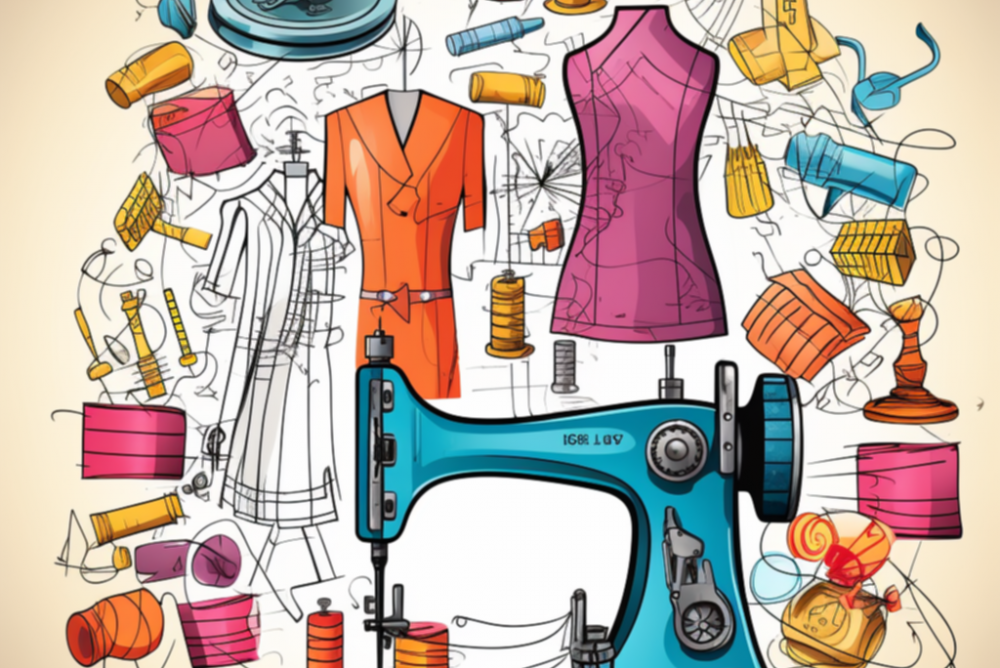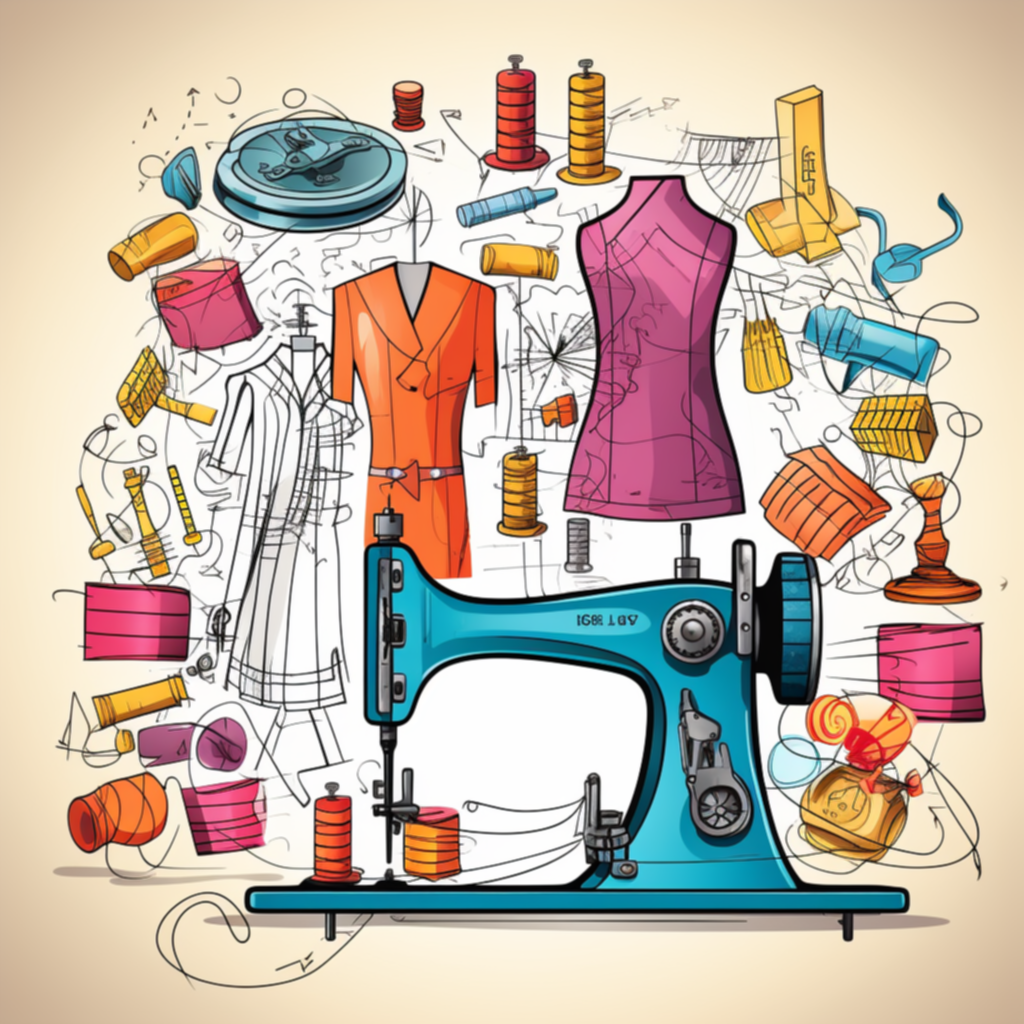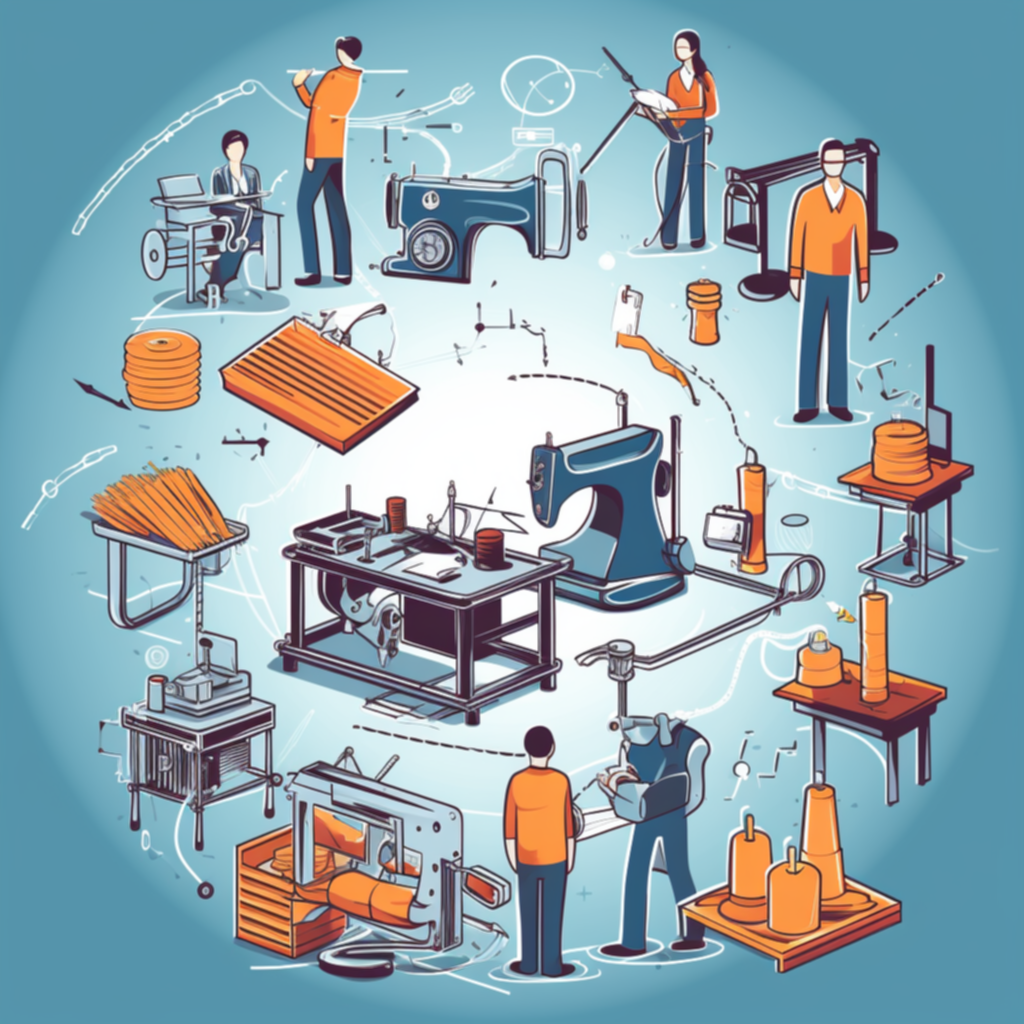Navigating Clothing Manufacturing: A Comprehensive Guide to Your Options


In the fashion industry, where trends change as swiftly as the seasons, the manufacturing process serves as the backbone, determining not just quality but also how quickly an idea turns into a wearable product. For entrepreneurs or designers looking to make their mark, understanding the variety of manufacturing options available can be a pivotal factor in their success. But the landscape isn't straightforward; it ranges from traditional handcrafted methods to cutting-edge, automated technologies. Each has its pros and cons, costs and benefits, and ethical implications.
Traditional Methods of Clothing Manufacturing
Traditional methods of clothing manufacturing are deeply rooted in history, drawing from techniques that have been refined over centuries. While they may lack the speed and economies of scale that modern technology offers, these methods hold their own, especially when it comes to quality and craftsmanship.
Hand Sewing
One of the oldest methods, hand sewing offers unparalleled attention to detail but is significantly more time-consuming and labor-intensive. This method is often reserved for high-end, luxury garments where craftsmanship is of the utmost importance.
Screen Printing
An age-old technique primarily used for designs and patterns on fabric, screen printing involves applying layers of ink onto a garment through a stencil. It’s cost-effective for small batches but less suitable for detailed, multicolored designs.
Weaving and Knitting
Weaving involves interlacing two sets of threads at right angles to create fabric. Knitting, on the other hand, entails interlocking yarns in a series of loops. Both methods are ancient yet continue to be employed for specific types of garments like woven shirts or knitted sweaters.
Dyeing and Batik
From the use of natural dyes derived from plants to intricate batik methods that use wax-resistant techniques, traditional dyeing methods are still in use, often due to their unique, vibrant results.
Pros and Cons
Pros: Exceptional quality, skilled craftsmanship, unique designs.
Cons: Time-consuming, labor-intensive, often more expensive.
While traditional methods may not be the most efficient, they offer a distinct set of advantages, especially for those who appreciate quality and craftsmanship over sheer quantity. However, they can be cost-prohibitive, particularly for larger scale production.
Modern Techniques: Mass Production
As the fashion industry has evolved, so too have the methods of mass production that bring designs from sketch to store. Leveraging technology for efficiency and scale, modern techniques are vastly different from traditional methods in both speed and volume.
Automated Sewing
Using computer-aided design (CAD) and computer-aided manufacturing (CAM), automated sewing machines can produce garments at a fraction of the time it takes to hand-sew them. This efficiency is particularly beneficial for fast fashion, where time to market is a crucial factor.
Sublimation Printing
A more modern counterpart to screen printing, sublimation printing allows for complex designs and colors to be applied to synthetic materials. The process uses heat to transfer dye directly into the fabric, ensuring long-lasting color and detail.
Laser Cutting
For precision cuts without the frayed edges, laser cutting has become increasingly popular. It offers a high level of accuracy, particularly useful for intricate designs and patterns.
3D Knitting
A step forward from traditional knitting, 3D knitting machines can produce complex woven garments in a single step, reducing the need for additional sewing or assembly.
Pros and Cons
Pros: Speed, scalability, consistency in quality.
Cons: May compromise on craftsmanship, higher energy consumption, not always suitable for all types of fabrics or designs.
In the world of mass production, modern techniques offer a blend of speed and efficiency that's essential for staying competitive in the fast-paced fashion industry. However, this comes at the cost of individual craftsmanship and may have environmental implications due to energy-intensive processes.

Custom Tailoring: The High-End Option
Custom tailoring represents the epitome of craftsmanship in the world of clothing. The attention to detail, the personalization, and the superior materials often used in this manufacturing method set it apart as a high-end option.
Bespoke vs. Made-to-Measure
While both terms are often used interchangeably, they aren't the same. Bespoke refers to garments made entirely from scratch based on the client's specifications, involving multiple fittings. Made-to-measure, meanwhile, adjusts existing patterns to fit the individual but doesn't offer the same level of customization.
Artisan Skills
Custom tailoring often involves a team of skilled artisans, each specializing in different aspects like cutting, stitching, and finishing. The cumulative expertise ensures a garment of exceptional quality.
Material Selection
From high-thread-count cottons to luxurious wools and silks, custom tailoring often makes use of premium materials that are hand-selected based on the client’s preferences.
Pros and Cons
Pros: High quality, personalized fit, luxurious materials.
Cons: Time-intensive, costly, not scalable for mass production.
While custom tailoring stands as a symbol of luxury and quality, it is neither quick nor economical. However, for those who prioritize individuality and craftsmanship, this remains a highly attractive option.
Sustainable Manufacturing
In recent years, sustainable manufacturing has moved from the periphery to the mainstream, fueled by increasing consumer awareness and demand for environmentally friendly products. As climate change and ethical labor practices become global priorities, this method of manufacturing serves as an evolving counterpoint to more traditional techniques.
Eco-Friendly Materials
Fabrics like organic cotton, hemp, and recycled polyester are gaining popularity for their lower environmental impact compared to traditional materials.
Low-Impact Dyeing
Sustainable manufacturing often employs low-impact dyes that require less water and are free from harmful chemicals, thereby reducing environmental damage.
Waste Reduction
Techniques such as zero-waste pattern making aim to use every piece of material, cutting down on waste. Some companies even recycle scraps into new products.
Ethical Labor
One of the pillars of sustainable manufacturing is ensuring ethical labor practices, including fair wages and safe working conditions.
Pros and Cons
Pros: Environmentally friendly, ethical labor practices, consumer appeal.
Cons: Often more expensive, may be limited in material choices, can be slower to produce.
Sustainable manufacturing comes with its own set of challenges, most notably the higher costs associated with eco-friendly materials and ethical labor. However, as consumer demand for sustainable options continues to grow, this could well be the future of the clothing manufacturing industry.
Niche Manufacturing: Specialized Fabrics and Techniques
In the vast spectrum of clothing manufacturing, there are niche methods that cater to specific markets, demands, or creative endeavors. Whether it's manufacturing for extreme weather conditions, medical needs, or high-performance sports, these specialized techniques have a crucial role to play.
Technical Textiles
Manufactured for non-aesthetic purposes, these textiles focus on performance and functionality. For example, fire-resistant fabrics for firefighters or moisture-wicking materials for athletes.
Smart Fabrics
With the advent of technology, smart fabrics that can monitor heart rate, temperature, and even offer GPS tracking are entering the market. These fabrics integrate micro-sensors and other electronic components.
Handcrafted Artisan Techniques
There are traditional artisan techniques that have been specialized to a point where they serve a very niche but devoted market. Think hand-embroidered lace, specialty knitwear, or exotic leathers.
Adaptive Clothing
Designed for people with disabilities or special needs, adaptive clothing uses magnetic closures, Velcro, and other innovations to make dressing easier and more comfortable.
Pros and Cons
Pros: Highly specialized, caters to specific needs, often integrates cutting-edge technology or artisan skills.
Cons: Typically more expensive, limited audience, may require specialized knowledge or equipment to produce.
Niche manufacturing offers the benefits of specialization and can command higher prices due to their unique selling points. However, their specialized nature means they often appeal to a smaller market and may entail additional production challenges.
Pros and Cons of Each Option
Choosing the right manufacturing option for your clothing line is a multifaceted decision. Here's a brief recap of the advantages and limitations of each method discussed:
Traditional Methods
Pros: High craftsmanship, unique designs, quality materials.
Cons: Time-consuming, costly, not scalable.
Modern Techniques: Mass Production
Pros: Efficiency, scalability, consistent quality.
Cons: Potentially compromised craftsmanship, energy-intensive.
Custom Tailoring: High-End Option
Pros: Personalized fit, luxurious materials, high quality.
Cons: Expensive, time-consuming, limited scalability.
Sustainable Manufacturing
Pros: Eco-friendly, ethical labor practices, market appeal.
Cons: Higher costs, limited materials, slower production.
Niche Manufacturing
Pros: Specialization, technological or artisanal uniqueness.
Cons: Limited audience, higher costs, specialized knowledge needed.
The 'right' method will depend on a variety of factors, including your target market, budget, quality expectations, and ethical considerations. Often, a blend of different methods might serve a business best, catering to different segments of the market or different types of clothing within a single brand.

Making the Choice: Factors to Consider
Deciding on the most suitable clothing manufacturing method is not a one-size-fits-all situation. Various factors will influence this critical choice, and understanding these can guide you in the right direction.
Budget Constraints
One of the foremost considerations is your budget. While high-end methods like custom tailoring or sustainable manufacturing offer distinct advantages, they also come with higher costs.
Volume Needs
Are you catering to a niche market or aiming for mass production? Your volume requirements will significantly impact your choice of manufacturing method.
Quality Expectations
If your brand is built around high-quality, luxurious items, then methods like custom tailoring or traditional craftsmanship may be more in line with your brand identity.
Ethical and Environmental Considerations
With growing awareness about ethical and environmental issues, brands that invest in sustainable manufacturing could attract a specific consumer base willing to pay a premium for these values.
Market Trends and Consumer Demands
Understanding your target market and keeping an eye on trends can provide valuable insights. For example, the increasing demand for eco-friendly products has made sustainable manufacturing more relevant than ever.
Flexibility and Adaptability
In an ever-changing market, the ability to adapt to new trends and technologies is crucial. Methods that offer some level of flexibility can be beneficial in the long run.
By taking these factors into account, you can make an informed decision that aligns with your brand's goals, ethical considerations, and budget constraints.
Conclusion and Future Trends
Clothing manufacturing is a dynamic, multifaceted industry with a plethora of options to suit different needs, whether it's the scale, quality, ethics, or niche markets. The right choice will often be a blend of various methods, influenced by an array of factors ranging from budget to brand ethos.
The Future: What Lies Ahead
Increased Automation
With advancements in technology, it's likely that automated methods will become even more refined, efficient, and potentially more sustainable.
Rise in Sustainable Practices
Consumer demand for eco-friendly and ethically made products is not a fleeting trend but an enduring shift that will continue to influence manufacturing methods.
Customization at Scale
Emerging technologies may soon enable high levels of customization even in mass-produced garments, bridging the gap between custom tailoring and mass production.
Integration of Technology
From smart fabrics to blockchain for verifying the authenticity and ethical standards of products, technology will increasingly become integrated into every aspect of clothing manufacturing.
The landscape of clothing manufacturing is ever-changing, influenced by technological innovations, consumer demand, and global challenges like climate change. Being adaptable, informed, and responsive to these changes will be key for success in this industry.
FAQs
Q: What is the cheapest method of clothing manufacturing?
A: Mass production is generally the most cost-effective, though it often compromises on customization and sometimes quality.
Q: How does sustainable manufacturing differ from traditional methods?
A: Sustainable manufacturing focuses on eco-friendly materials and ethical labor practices, often at a higher cost than traditional methods.
Q: Is custom tailoring only suitable for high-end fashion?
A: While custom tailoring is often more expensive, it's not exclusively for high-end fashion. It can be utilized for anyone seeking a personalized fit.
Q: What are "technical textiles"?
A: These are fabrics engineered for specific functional requirements rather than aesthetics, such as fire-resistance or moisture-wicking.
Q: How important is it to consider environmental impact?
A: With growing consumer awareness, environmental considerations are becoming increasingly important for brand image and marketability.





-500x500.jpg)
-500x500.jpg)
-500x500.jpg)
-500x500.jpg)
-500x500.jpg)